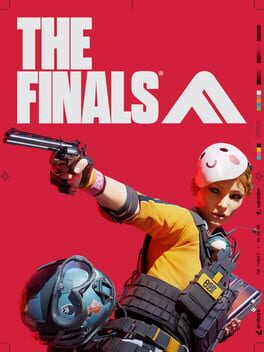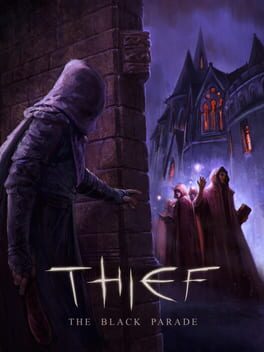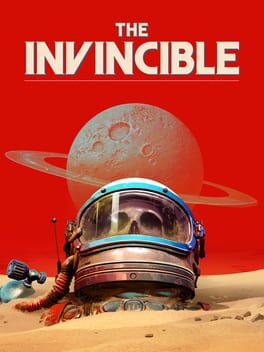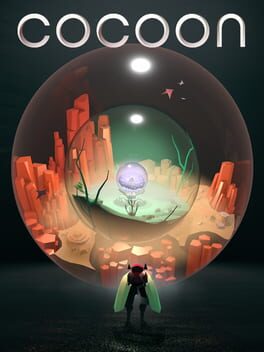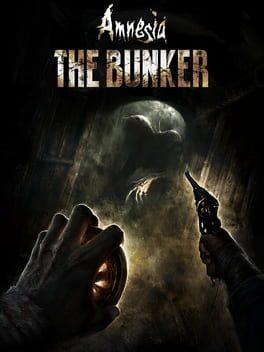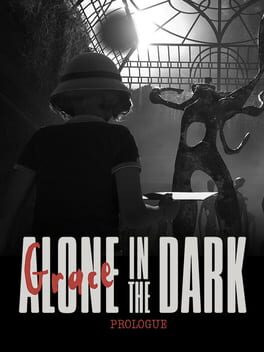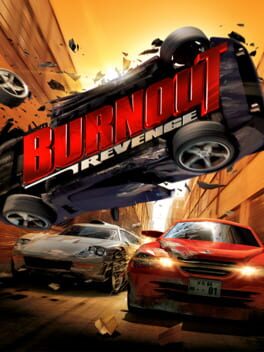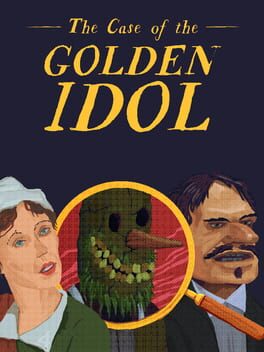max_q
2022
Scorn is an uneven balance of Riven-like alien techno-puzzling and atmospheric existential horror akin to SOMA. The art is a perfect amalgamation of Giger & Beksiński, fleshy organic architecture amassed across the surface of a dying world. The first two-thirds present particularly engaging core puzzles, as you slowly unpick the purpose of the machines you are revving up, often leading to some sort of sacrifice of an innocent(?) being (ranging from tiny weird guys to enormous weird guys) in this abject world. The wordless communication of the narrative through exploration, the environment & your ritualistic puzzling is refreshing (in a time where many games won't. shut. up).
The alien life wandering the flesh-corridors are alluring at first, with some interesting behaviours ambivalent to, & decentering, the player. But their placement and the very awkward feeling combat generates annoyance rather than tension, a very clumsy implementation of what was probably envisioned as a ‘living’ world but grew smaller in scope as they struggled to bring this to release. This is most evident in the very dull final chapter where a (puzzle) boss and most puzzles are solved with blunt-force explosives. Despite my final impressions, Ebb has a really strong foundation here and I look forward to seeing how they grow.
The alien life wandering the flesh-corridors are alluring at first, with some interesting behaviours ambivalent to, & decentering, the player. But their placement and the very awkward feeling combat generates annoyance rather than tension, a very clumsy implementation of what was probably envisioned as a ‘living’ world but grew smaller in scope as they struggled to bring this to release. This is most evident in the very dull final chapter where a (puzzle) boss and most puzzles are solved with blunt-force explosives. Despite my final impressions, Ebb has a really strong foundation here and I look forward to seeing how they grow.
2024
12 years on from the strange, incomplete original, DD2 is more of the same, uneasily sitting between the uncompromising Souls series & more conventional narrative ARPGs. At times evoking a desolate offline MMO, DD2 is at its best when out in the wilds, the sun setting at your back & two or more beasts landing on the path ahead, all Arising out of dynamic systems.
The main questline unfortunately does not play to these strengths, with much of Act I confined to the capital & some really dull writing. Fortunately, writing does not maketh a game, and side-quests that take you out into the unreasonably huge map are much more interesting, and really need to be sought out in the crowds and corners of the world. Keeping track of these with the bizarre quest tracker is uneven and obtuse: you’re either reading the landscape and tracing clues or just beating your head against a wall figuring out what the game requires of you.
Dragon’s Dogma 2 is singular, not quite fully realised, a beautifully rendered physics-heavy oddity. The art direction is profoundly generic, but so deceptively understated it at times resembles a Ray Harryhausen film, full of weight, movement and character. DD2 makes you feel like you have friends, albeit stupid friends, who'd throw themselves off a cliff for a view of yonder.
The main questline unfortunately does not play to these strengths, with much of Act I confined to the capital & some really dull writing. Fortunately, writing does not maketh a game, and side-quests that take you out into the unreasonably huge map are much more interesting, and really need to be sought out in the crowds and corners of the world. Keeping track of these with the bizarre quest tracker is uneven and obtuse: you’re either reading the landscape and tracing clues or just beating your head against a wall figuring out what the game requires of you.
Dragon’s Dogma 2 is singular, not quite fully realised, a beautifully rendered physics-heavy oddity. The art direction is profoundly generic, but so deceptively understated it at times resembles a Ray Harryhausen film, full of weight, movement and character. DD2 makes you feel like you have friends, albeit stupid friends, who'd throw themselves off a cliff for a view of yonder.
2023
Some cool tech & snappy gameplay trapped in Free-to-play hell. We talk a lot about games being tied to & shaped by their technology but little about how they’re shaped, and hollowed out, by their revenue model: GaaS “living games” are released (and shut down) before there is any life in them.
The Finals contains the movement & sugary energy of nu-battlefield (post-Battlefield 1) wrapped in the most horrid vibes: Forza Horizon-esque npcs at their infinite party, Siege/Valorant/Hyperscape-adjacent esports mush. Embark has managed to make Unreal resemble Frostbite, including impressive physics & destruction that echoes the chaos of bad company 2, but it’s all wasted here.
Even for a tight competitive shooter, this needs a more fleshed out setting, either leaning further into the surreal elements (bodies exploding into coins) or situating it in a world that is more than a watered down squid-game/mirror's edge/DICE's entire catalog. Feels like a very polished tech-demo and I refuse to play 100 hours to unlock interesting mechanics or outfits, which has led to every character running around in the default tracksuit/pyjamas. And don't get me started on the AI voices.
I am cautiously optimistic about embark’s other beautiful but empty sci-fi project, ARC raiders, which has seemingly transformed into yet another extraction shooter.
The Finals contains the movement & sugary energy of nu-battlefield (post-Battlefield 1) wrapped in the most horrid vibes: Forza Horizon-esque npcs at their infinite party, Siege/Valorant/Hyperscape-adjacent esports mush. Embark has managed to make Unreal resemble Frostbite, including impressive physics & destruction that echoes the chaos of bad company 2, but it’s all wasted here.
Even for a tight competitive shooter, this needs a more fleshed out setting, either leaning further into the surreal elements (bodies exploding into coins) or situating it in a world that is more than a watered down squid-game/mirror's edge/DICE's entire catalog. Feels like a very polished tech-demo and I refuse to play 100 hours to unlock interesting mechanics or outfits, which has led to every character running around in the default tracksuit/pyjamas. And don't get me started on the AI voices.
I am cautiously optimistic about embark’s other beautiful but empty sci-fi project, ARC raiders, which has seemingly transformed into yet another extraction shooter.
Thief is methodically mapping space from the shadows. Thief is exploring an architecture of absurd, arcane labyrinths. Thief is rotoscoped & roughly layered 90s FMVs scored with industrial beats.
The Black Parade, a fan campaign mod for the now 25 year old Thief: The Dark Project, brings Thief into the present as an act of alternate-history building. Within the tight restrictions of the Dark Engine, this imagines what Thief could be given decades of further contemplation, or in this case, seven years of development led by famed modder Skacky.
The Black Parade echoes iconic levels: here is a mansion, or a sprawling, vertical city, a rain-swept church, a plague stricken derelict district. But everything is now denser, more honeycombed, more varied. At times you’ll be lost, but they’ve paid special attention to every room’s volume, materials, light and colour, so that your mental map is as rich as your potential targets.
Thief separates itself from other Im-Sims by refusing to be an everything-game (Deus-Ex). You are a thief. You can’t fight for shit. You can jump from carpet to carpet and knock someone out if you’re good, but you can’t do much about two guards on your tail. Thief is narrowly designed to do one thing. The Black Parade knows this and is as close to Thief 3 (5?) that we’ll ever get.
The Black Parade, a fan campaign mod for the now 25 year old Thief: The Dark Project, brings Thief into the present as an act of alternate-history building. Within the tight restrictions of the Dark Engine, this imagines what Thief could be given decades of further contemplation, or in this case, seven years of development led by famed modder Skacky.
The Black Parade echoes iconic levels: here is a mansion, or a sprawling, vertical city, a rain-swept church, a plague stricken derelict district. But everything is now denser, more honeycombed, more varied. At times you’ll be lost, but they’ve paid special attention to every room’s volume, materials, light and colour, so that your mental map is as rich as your potential targets.
Thief separates itself from other Im-Sims by refusing to be an everything-game (Deus-Ex). You are a thief. You can’t fight for shit. You can jump from carpet to carpet and knock someone out if you’re good, but you can’t do much about two guards on your tail. Thief is narrowly designed to do one thing. The Black Parade knows this and is as close to Thief 3 (5?) that we’ll ever get.
2023
Struggled to put together my thoughts on this. Escalates from mediocre to engaging somewhere about ten hours in, followed immediately by an overwhelming sense of emptiness. All of Bethesda's quirks are here in the worst ways: dead mannequin npcs, clumsy systems that don’t quite cohere, a terrible main quest that drifts across the flimsy surface of alien artifact sci-fi stories.
But something worse about this one is the lack of texture. There are very few freaks, minor discoveries off the beaten path, companions that make you feel something (Nick <3). Everyone is so nice, the politics completely empty. Cities are so strange and dead, with sound design attempting to evoke the density of Night City but lacking any real scale - the abstraction of a fantasy setting no longer here to distract you from asking: why is this just one square block?
This must’ve been a monumental effort to produce, but why dedicate seven years to creating a pale echo of The Expanse, Mass Effect & Firefly? There are hints of another game in here - one with meaningful travel and fewer, more fleshed out worlds - that was abandoned prior to shifting to this smooth, soulless, bloated final form.
But something worse about this one is the lack of texture. There are very few freaks, minor discoveries off the beaten path, companions that make you feel something (Nick <3). Everyone is so nice, the politics completely empty. Cities are so strange and dead, with sound design attempting to evoke the density of Night City but lacking any real scale - the abstraction of a fantasy setting no longer here to distract you from asking: why is this just one square block?
This must’ve been a monumental effort to produce, but why dedicate seven years to creating a pale echo of The Expanse, Mass Effect & Firefly? There are hints of another game in here - one with meaningful travel and fewer, more fleshed out worlds - that was abandoned prior to shifting to this smooth, soulless, bloated final form.
2023
The core element of Lem’s 1964 novel they’ve captured is the planet of Regis III, with its pastel pink dunes and liquid rock formations, an intoxicating, vivid landscape. The plot is tangential to the novel, and part of the mystery is how it fits in with Lem’s tale of advanced military tech facing up against an inexplicable alien force.
But unfortunately (about 7 years out from Firewatch and 6 from SOMA), they really aren’t doing enough here to distinguish this from numerous hollow walking sims, despite the painterly landscapes and luxurious retro-futuristic tech. There’s little negative space to soak in the planet's surface, only constant muttering to yourself or your weirdly annoyed boss off-planet. Overlapping dialogue and abrupt popups disrupt gameplay constantly, and no amount of contextual animations can feel like meaningful interactions.
Puzzles are almost an afterthought and at most you will contend with occasional navigation challenges through samey looking caves. Outer Wilds and Subnautica have demonstrated how alien archeology and space exploration can be distilled into tense & dynamic gameplay, and in comparison this feels a little archaic. I look forward to more attempts at Lem’s work (possibly a psychological horror take on Solaris!?) and recommend experiencing this for the artwork alone (& a climax featuring the largest rocket of all time 0::).
But unfortunately (about 7 years out from Firewatch and 6 from SOMA), they really aren’t doing enough here to distinguish this from numerous hollow walking sims, despite the painterly landscapes and luxurious retro-futuristic tech. There’s little negative space to soak in the planet's surface, only constant muttering to yourself or your weirdly annoyed boss off-planet. Overlapping dialogue and abrupt popups disrupt gameplay constantly, and no amount of contextual animations can feel like meaningful interactions.
Puzzles are almost an afterthought and at most you will contend with occasional navigation challenges through samey looking caves. Outer Wilds and Subnautica have demonstrated how alien archeology and space exploration can be distilled into tense & dynamic gameplay, and in comparison this feels a little archaic. I look forward to more attempts at Lem’s work (possibly a psychological horror take on Solaris!?) and recommend experiencing this for the artwork alone (& a climax featuring the largest rocket of all time 0::).
2023
WAKE!
A great and absurdly overwritten, overdesigned & ploddingly paced game. Gratuitous exposition beating you down & down & down until Garth Marenghi (Wake) can escape the darkplace, a dim Mauve Zone/Silent Hill analog. Drawing from Twin Peaks: The Return, The Night House, True Detective & a little bit of Vanishing on 7th Street(?!!), Sam Lake is so buried under the weight of his influences that he rarely finds his own voice.
Contained in here is an efficient, stripped-down survival horror game, full of winding paths, plenty of fleshed-out re-visitation of areas that make Bright Falls a real sick Place to be by the end. Saga’s mindplace asks you to build your evidence to produce your own objectives (often to an insane degree of detail, where you find out you must speak to someone, as you are in that very moment standing in front of them). Rendering every objective and clue a physical, tactile object does align the player with the characters - who are (especially Lake) idiots.
Remedy have inverted the small puzzle-intermissions from Control into the entire structure of this game, all winding, looping, shifting architecture (a trope they indulge in here with glee). Enemies are relatively bland but encountered infrequently enough it was almost a non-issue (compared to the excessive waves of Control). Many of the kitsch FMV sequences were underwhelming, but it was where they were layered directly into the world that it worked for me, transparent membranes of Max Payne’s Lake/James McCaffrey in silhouette just hanging out and talking complete nonsense (I love him).
Honestly this is a case where the energy, humour and confidence of this overwhelming mess tips into endearing. Not to mention the absolutely beautiful soft, dimly-lit spaces in here that I'd be happy living in (especially the retirement home and Nu York apartment). Between this, Death Stranding & recent RE titles I begrudgingly accept that sometimes photorealism is valid & not just dull marketing for graphics cards. WAKE
Edit: RIP James McCaffrey! <3
A great and absurdly overwritten, overdesigned & ploddingly paced game. Gratuitous exposition beating you down & down & down until Garth Marenghi (Wake) can escape the darkplace, a dim Mauve Zone/Silent Hill analog. Drawing from Twin Peaks: The Return, The Night House, True Detective & a little bit of Vanishing on 7th Street(?!!), Sam Lake is so buried under the weight of his influences that he rarely finds his own voice.
Contained in here is an efficient, stripped-down survival horror game, full of winding paths, plenty of fleshed-out re-visitation of areas that make Bright Falls a real sick Place to be by the end. Saga’s mindplace asks you to build your evidence to produce your own objectives (often to an insane degree of detail, where you find out you must speak to someone, as you are in that very moment standing in front of them). Rendering every objective and clue a physical, tactile object does align the player with the characters - who are (especially Lake) idiots.
Remedy have inverted the small puzzle-intermissions from Control into the entire structure of this game, all winding, looping, shifting architecture (a trope they indulge in here with glee). Enemies are relatively bland but encountered infrequently enough it was almost a non-issue (compared to the excessive waves of Control). Many of the kitsch FMV sequences were underwhelming, but it was where they were layered directly into the world that it worked for me, transparent membranes of Max Payne’s Lake/James McCaffrey in silhouette just hanging out and talking complete nonsense (I love him).
Honestly this is a case where the energy, humour and confidence of this overwhelming mess tips into endearing. Not to mention the absolutely beautiful soft, dimly-lit spaces in here that I'd be happy living in (especially the retirement home and Nu York apartment). Between this, Death Stranding & recent RE titles I begrudgingly accept that sometimes photorealism is valid & not just dull marketing for graphics cards. WAKE
Edit: RIP James McCaffrey! <3
2023
A smooth, polished object, to be expected from members behind Limbo & Inside. Much more of a pure puzzle game than cinematic platformer, it always feels expensive, atmospheric & opaque. Many puzzles come down to ‘place box in the right order’ & rely on your short term memory's ability to hold the layered levels in your mind (failing this, running back thru over and over, observing the puzzle layout).
The world full of biological machinery and an ambiguous alien industry recalls the stronger elements of Scorn (is this cosy scorn?) but I never felt the puzzles connected with the world in a meaningful way outside of the core ‘carrying around the level’ mechanic - which is always satisfying, but never too interesting. I do admire the inexplicable difficulty spikes (bullet-hell bosses?!) that do lend some much needed friction, but for a little guy with wings, the game is remarkably rigid, lacking the playful physics & movement of Playdead’s work.
The world full of biological machinery and an ambiguous alien industry recalls the stronger elements of Scorn (is this cosy scorn?) but I never felt the puzzles connected with the world in a meaningful way outside of the core ‘carrying around the level’ mechanic - which is always satisfying, but never too interesting. I do admire the inexplicable difficulty spikes (bullet-hell bosses?!) that do lend some much needed friction, but for a little guy with wings, the game is remarkably rigid, lacking the playful physics & movement of Playdead’s work.
2023
fumbling in the dark
The bunker is a smaller, narratively unambitious left-turn for Frictional. While they tinker away with what I assume is a larger, SOMA-like project, here they've shed much of the weight they’ve accumulated over the years, weight that really dragged Rebirth down, and turned their attention back to the moment-to-moment mechanics. They’ve finally confronted the minimalistic hide-and-seek gameplay that has become increasingly tired, and re-embraced tools & limited weapons (last seen in their Penumbra series).
The immersive sim approach to puzzles allows for multiple solutions & is simple and direct: every tool is a key, a distraction or a temporary defense. Combined with the tight, claustrophobic map, the Bunker asks you to build a mental model of the spaces so that you may eventually navigate them with your eyes closed (& with the lights out). Much of the horror is suggested, a threat conjured in the dark.
Another strength of Frictional’s is their HPL engine and its tactile physics system (surprisingly uncommon in a post-half-life 2 world). Pulling at a loose board clumsily, the creaking drawing the creature, has a weight to it that a pre-canned animation couldn’t carry. Like many im-sims, it is the abysmal failures and inexplicable systemic outcomes that stay with you (especially if you survive them), rather than the authored story.
Some may find it a little too stripped-down (along with a rather abrupt, clumsy ending), but after Rebirth’s incessant narration, I’m happy they had the confidence to just leave you in a desolate space of worn concrete and tangled wire and simply ask you to escape alive.
The bunker is a smaller, narratively unambitious left-turn for Frictional. While they tinker away with what I assume is a larger, SOMA-like project, here they've shed much of the weight they’ve accumulated over the years, weight that really dragged Rebirth down, and turned their attention back to the moment-to-moment mechanics. They’ve finally confronted the minimalistic hide-and-seek gameplay that has become increasingly tired, and re-embraced tools & limited weapons (last seen in their Penumbra series).
The immersive sim approach to puzzles allows for multiple solutions & is simple and direct: every tool is a key, a distraction or a temporary defense. Combined with the tight, claustrophobic map, the Bunker asks you to build a mental model of the spaces so that you may eventually navigate them with your eyes closed (& with the lights out). Much of the horror is suggested, a threat conjured in the dark.
Another strength of Frictional’s is their HPL engine and its tactile physics system (surprisingly uncommon in a post-half-life 2 world). Pulling at a loose board clumsily, the creaking drawing the creature, has a weight to it that a pre-canned animation couldn’t carry. Like many im-sims, it is the abysmal failures and inexplicable systemic outcomes that stay with you (especially if you survive them), rather than the authored story.
Some may find it a little too stripped-down (along with a rather abrupt, clumsy ending), but after Rebirth’s incessant narration, I’m happy they had the confidence to just leave you in a desolate space of worn concrete and tangled wire and simply ask you to escape alive.
A very minor experience demonstrating Alone in the Dark may turn out to be a solid early 2010s AA release with a heart, complete with unnerving dead-eyed character models (look at Grace in the poster!), some real iffy contextual interactions (the stairs lol) and plodding movement. With Mikael Hedberg (SOMA) writing, I'm still looking forward to the full game and am curious about how they'll blend the surreal southern gothic tone with the creature-feature aspects, which are a little clumsily combined here.
2023
Was initially worried this was a little redundant after Village and questioned if 4 really needed an update. Ultimately I found this a great time. The combat (once I got a handle on the melee mechanics) is consistently tense and tangible, with the chaotic shifting from crowd control to one-on-one parrying. I loved the almost immersive-sim interactions between enemies causing emergent chaos.
I cared little about the narrative changes as I literally played the PS2 release, so all is a foggy memory, but from what I could recall, I was consistently surprised by moments rearranged, recontextualised. Yes, the island is serviceable compared to the village/castle, but I enjoyed the grungy interiors and the big-boi regenerador sequence. Of all the boss changes, Krauser was a big standout, a metal-gear tier fight.
A few changes I was less happy with (most are hangovers from the recent REmakes): the lack of laser targeting for all weapons, the change from the semi-detached aiming system & less variety of interactive objects u could shoot. RE4 felt so revolutionary as a horror/shooter at the time due to how the gun felt like a tactile tool, taking out doors, knees & plucking weapons from the air. Much of this is still here, but a little stripped down (tho with some new additions, including rampaging farm animals).
Where does Resi go now? Village and R4MAKE have converged, and hopefully they don’t just fall back down into the slump of 5 & 6 (though 5 remake is inevitable lol) Hopefully a complete rebirth like 7 is on the cards. Capcom pls.
I cared little about the narrative changes as I literally played the PS2 release, so all is a foggy memory, but from what I could recall, I was consistently surprised by moments rearranged, recontextualised. Yes, the island is serviceable compared to the village/castle, but I enjoyed the grungy interiors and the big-boi regenerador sequence. Of all the boss changes, Krauser was a big standout, a metal-gear tier fight.
A few changes I was less happy with (most are hangovers from the recent REmakes): the lack of laser targeting for all weapons, the change from the semi-detached aiming system & less variety of interactive objects u could shoot. RE4 felt so revolutionary as a horror/shooter at the time due to how the gun felt like a tactile tool, taking out doors, knees & plucking weapons from the air. Much of this is still here, but a little stripped down (tho with some new additions, including rampaging farm animals).
Where does Resi go now? Village and R4MAKE have converged, and hopefully they don’t just fall back down into the slump of 5 & 6 (though 5 remake is inevitable lol) Hopefully a complete rebirth like 7 is on the cards. Capcom pls.
2005
This is a fourteen-year-old’s fever dream after glimpsing a poster for fast & furious: no characters, real cars, stakes, narrative, just a visceral piss-colour-graded world tour that could only have emerged from a series building upon itself in isolation without any real-world reference: an automotive dream-world, an underworld to Forza’s sunny utopia.
I yearn for a timeline where Burnout wasn’t abandoned, and for tracks full of character to remain at the core of the arcade racer experience. Despite tech advancements, even Paradise didn’t quite capture the off-kilter energy of Criterion’s peak of Takedown and Revenge.
I yearn for a timeline where Burnout wasn’t abandoned, and for tracks full of character to remain at the core of the arcade racer experience. Despite tech advancements, even Paradise didn’t quite capture the off-kilter energy of Criterion’s peak of Takedown and Revenge.
Charming, crude art direction and ludicrous situations carry this further than expected. The deduction gameplay builds on Obra Dinn in a way that is a little more focused in its structure, progressing linearly through puzzles, so it doesn’t quite suffer from the slight meandering final third of Dinn (that was a little too freeform for its own good).
I do think the more heightened, fantastic scenarios lose their lustre quite quickly, and I did prefer the earlier, more ‘grounded’ puzzles. A mystery needs gaps, intrigue, momentum, and I found most of the later scenes convoluted in a profoundly absurd way, though really funny.
The reliance on discovering words to describe the scenarios also leads to a lot of studying crucial documents to solve logic puzzles, and Obra Dinn’s minimalist focus on studying the scenes (faces, poses, props), without any documents to provide exposition, was felt missing here.
I do think the more heightened, fantastic scenarios lose their lustre quite quickly, and I did prefer the earlier, more ‘grounded’ puzzles. A mystery needs gaps, intrigue, momentum, and I found most of the later scenes convoluted in a profoundly absurd way, though really funny.
The reliance on discovering words to describe the scenarios also leads to a lot of studying crucial documents to solve logic puzzles, and Obra Dinn’s minimalist focus on studying the scenes (faces, poses, props), without any documents to provide exposition, was felt missing here.
2022
What makes Pentiment more than an interactive Name of the Rose is the expansion of the narrative over multiple time-scales, with decisions echoing throughout days, seasons and decades. While Rose is confined to a few days, taking place in “real time”, Pentiment expands further through time (and space, from within the abbey and then out into the surrounding village). The narrative momentum gradually slows to a haunting, sad resolution.
Similar to Pathologic 2, time is against you, and no mystery is ever fully resolved. With the little info collected in your investigations, the truth is always incomplete, and a lingering guilt is cast over your decisions. Unlike Patho 2, time progresses in an abstracted way: during the day you may talk to anyone you find, but engaging in work, meals or certain events will advance time. There is no real-time simulation of the town, but the ever-changing seasons, events, architecture and people give Tassing the illusion of an analog, living world that many ‘dynamic’ open-worlds struggle to evoke.
I was initially put off by the art direction, akin to contemporary animation like Song of the Sea/Secret of Kells (which director Josh Sawyer has mentioned as an early influence) and I was looking for something uglier, maybe closer to the work found within the manuscript’s margins. Ultimately, this does lend a more expressive, readable quality to the characters and world.
Similar to Pathologic 2, time is against you, and no mystery is ever fully resolved. With the little info collected in your investigations, the truth is always incomplete, and a lingering guilt is cast over your decisions. Unlike Patho 2, time progresses in an abstracted way: during the day you may talk to anyone you find, but engaging in work, meals or certain events will advance time. There is no real-time simulation of the town, but the ever-changing seasons, events, architecture and people give Tassing the illusion of an analog, living world that many ‘dynamic’ open-worlds struggle to evoke.
I was initially put off by the art direction, akin to contemporary animation like Song of the Sea/Secret of Kells (which director Josh Sawyer has mentioned as an early influence) and I was looking for something uglier, maybe closer to the work found within the manuscript’s margins. Ultimately, this does lend a more expressive, readable quality to the characters and world.
2022
45 minutes trapped in a tin can deep within an alien ocean feels like an escape after so many all-encompassing open-worlds. The minimalist interface and sensory deprivation leaves much of the experience to suggestion and, despite a few goofy scares, the photography mechanic leaves you with an effective impressionistic, grainy view of the exterior void, always kept at a murky distance. The overtly grim-dark world feels akin to the Riddick or Alien universes, crushing corporate dystopias of purgatorial suffering.


